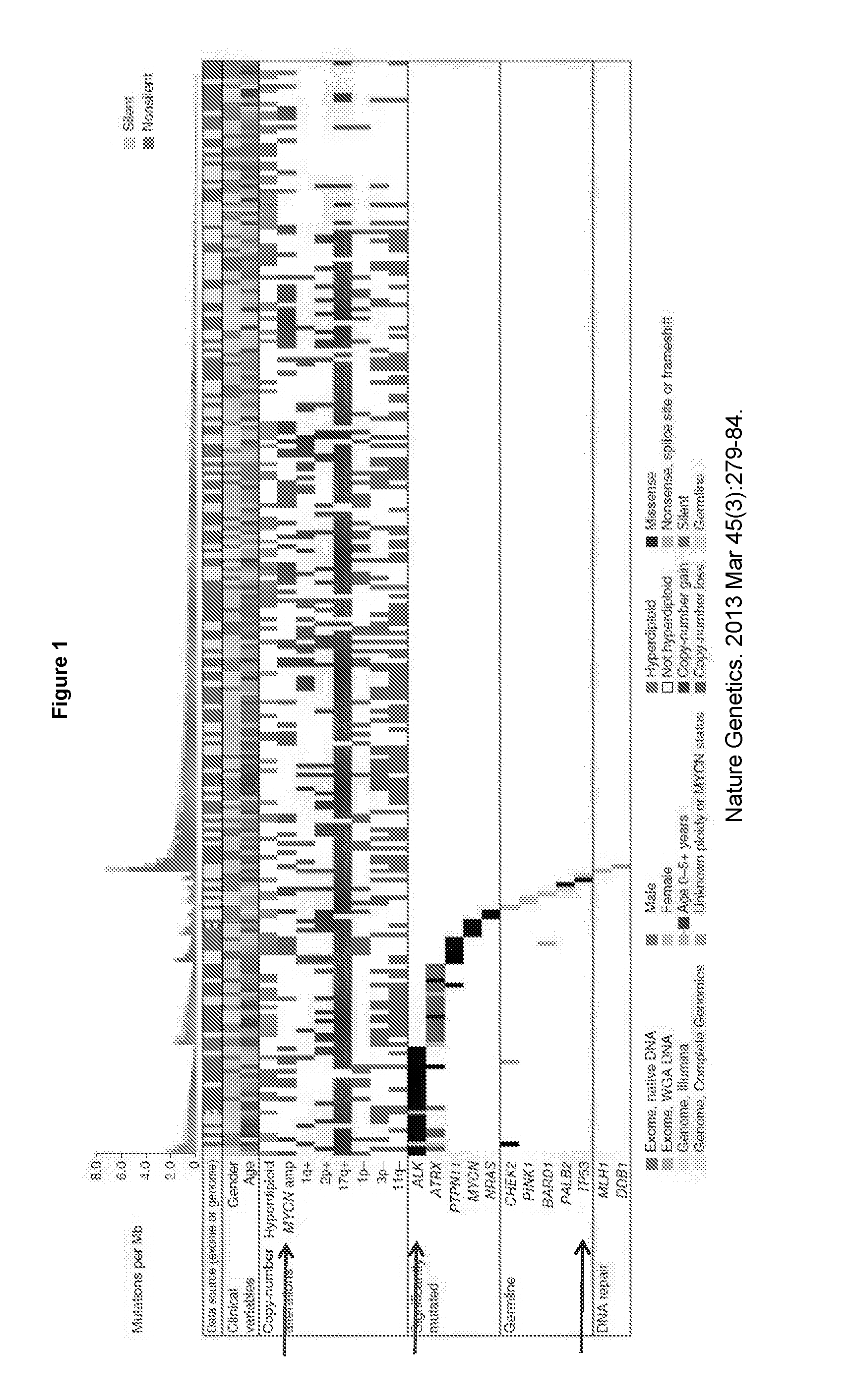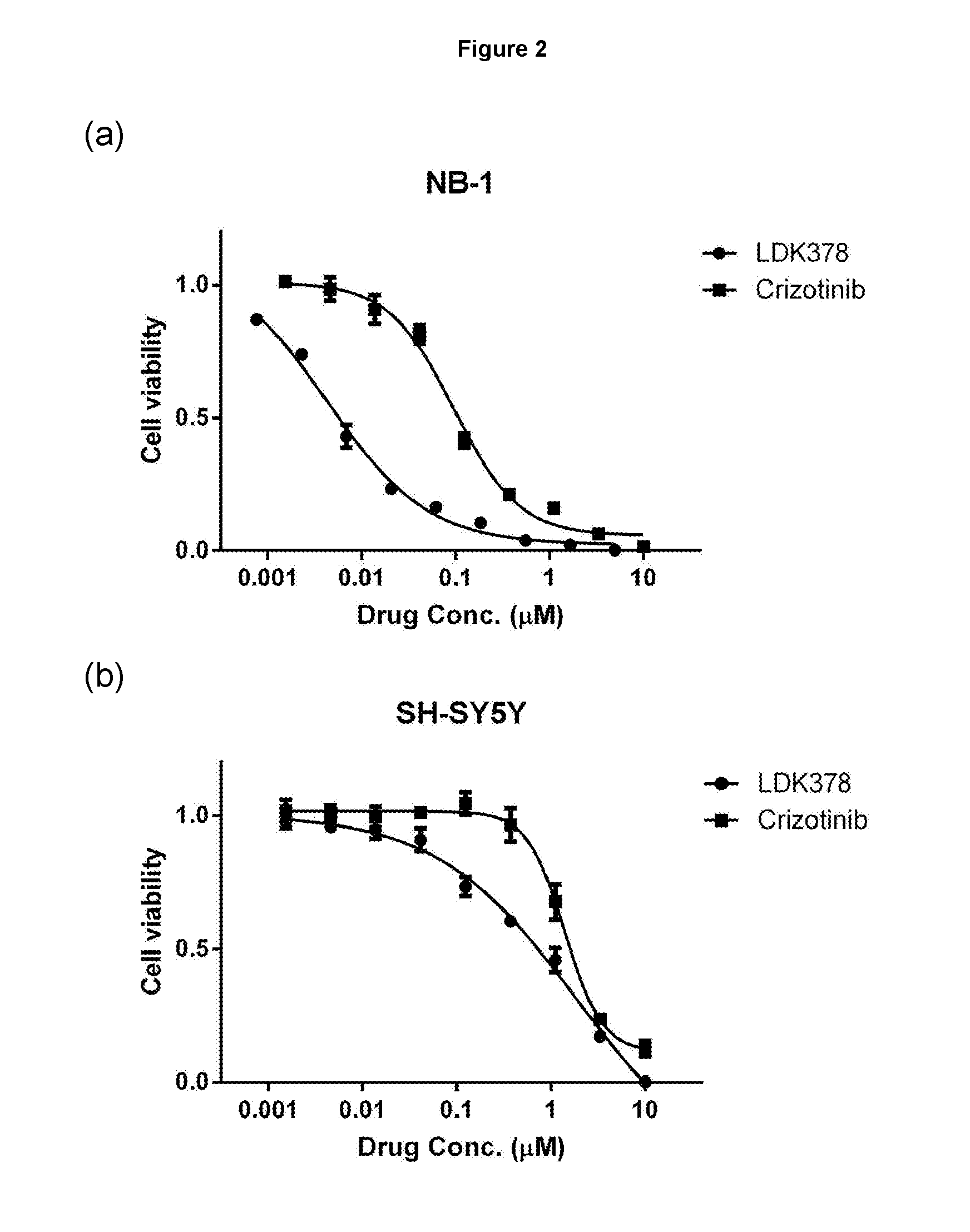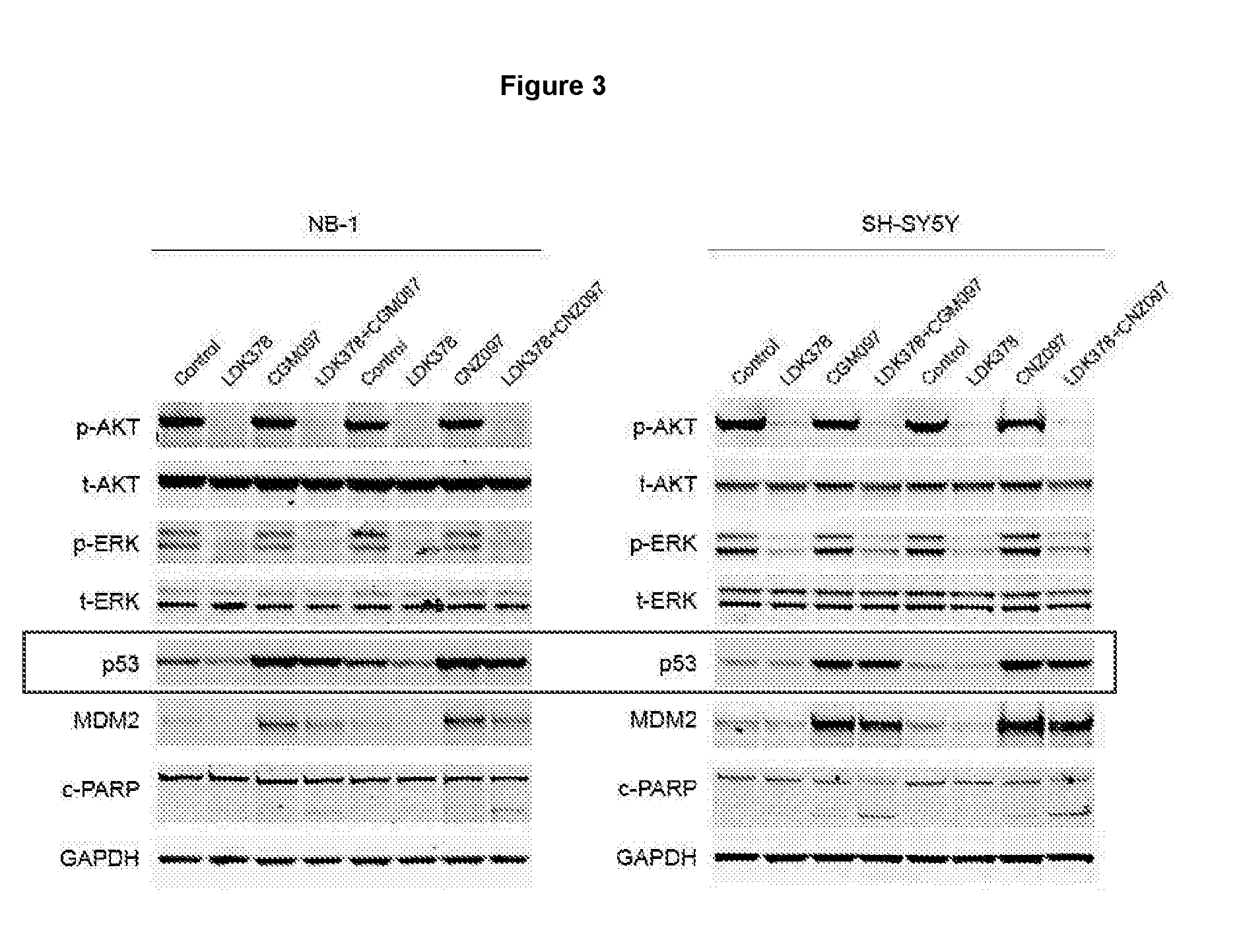Pharmaceutical Combinations
a technology of combination and drug, applied in the field of pharmaceutical combination, can solve the problems of poor clinical treatment outcomes, poor efficacy, poor outcome, etc., and achieve the effect of inhibiting neuroblastoma and surprising efficacy
- Summary
- Abstract
- Description
- Claims
- Application Information
AI Technical Summary
Benefits of technology
Problems solved by technology
Method used
Image
Examples
example 1
HDM-2 / p53 Inhibitor and an Anaplastic Lymphoma Kinase (ALK) Inhibitor in Neuroblastoma
[0377]Neuroblastoma is the most common cancer in infancy, accounting for 15% of all childhood cancer-related death. MYCN amplification is the major genetic aberration in high-risk neuroblastoma and is associated with poor outcome (please refer to FIGS. 1 and 2). Genome-wide association studies have identified activation mutations and high-level amplification of ALK in approximately 10% of neuroblastoma patients (FIG. 3). In addition, ALK mutations can coexist with MYCN amplification, which defines a subset of ultra-high-risk neuroblastoma patients (FIG. 4). In contrast to the high frequency of p53 mutations observed in many human cancers of adults, mutations of p53 are less common in childhood cancers and have been reported in less than 2% of neuroblastomas. Wild-type (WT) p53 is required for the activation of p53 signaling by HDM-2 / p53 inhibitors. This suggests that neuroblastoma could be amenable...
example 2
HDM-2 / p53 Inhibitor and an Anaplastic Lymphoma Kinase (ALK) Inhibitor in Neuroblastoma In Vivo
[0383]The combination of LDK378 (Compound B) and HDM-2 / p53 inhibitor (S)-5-(5-Chloro-1-methyl-2-oxo-1,2-dihydro-pyridin-3-yl)-6-(4-chloro-phenyl)-2-(2,4-dimethoxy-pyrimidin-5-yl)-1-isopropyl-5,6-dihydro-1H-pyrrolo[3,4-d]imidazol-4-one (Compound C) were tested in NB-1 neuroblastoma in vivo xenograft model. A total of 5 animals per group were enrolled in efficacy study. For single-agent and combination studies, animals were dosed via oral gavage for both LDK378 and Compound C. LDK378 was formulated in 0.5% CMC / 0.5% Tween 80, and Compound C was formulated in Methylcellulose 0.5% w / V in pH 6.8 50 mM phosphate buffer at 20 mg / kg as free base. For NB1 model, the tumors reached approximately 200 mm3 at day 16 post implantation. On Day 16, tumor-bearing mice were randomized into treatment groups.
[0384]The design of the study including dose schedule for all treatment groups are summarized in the Tab...
PUM
| Property | Measurement | Unit |
|---|---|---|
| emission wavelength | aaaaa | aaaaa |
| emission wavelength | aaaaa | aaaaa |
| volume | aaaaa | aaaaa |
Abstract
Description
Claims
Application Information
 Login to View More
Login to View More - R&D
- Intellectual Property
- Life Sciences
- Materials
- Tech Scout
- Unparalleled Data Quality
- Higher Quality Content
- 60% Fewer Hallucinations
Browse by: Latest US Patents, China's latest patents, Technical Efficacy Thesaurus, Application Domain, Technology Topic, Popular Technical Reports.
© 2025 PatSnap. All rights reserved.Legal|Privacy policy|Modern Slavery Act Transparency Statement|Sitemap|About US| Contact US: help@patsnap.com



